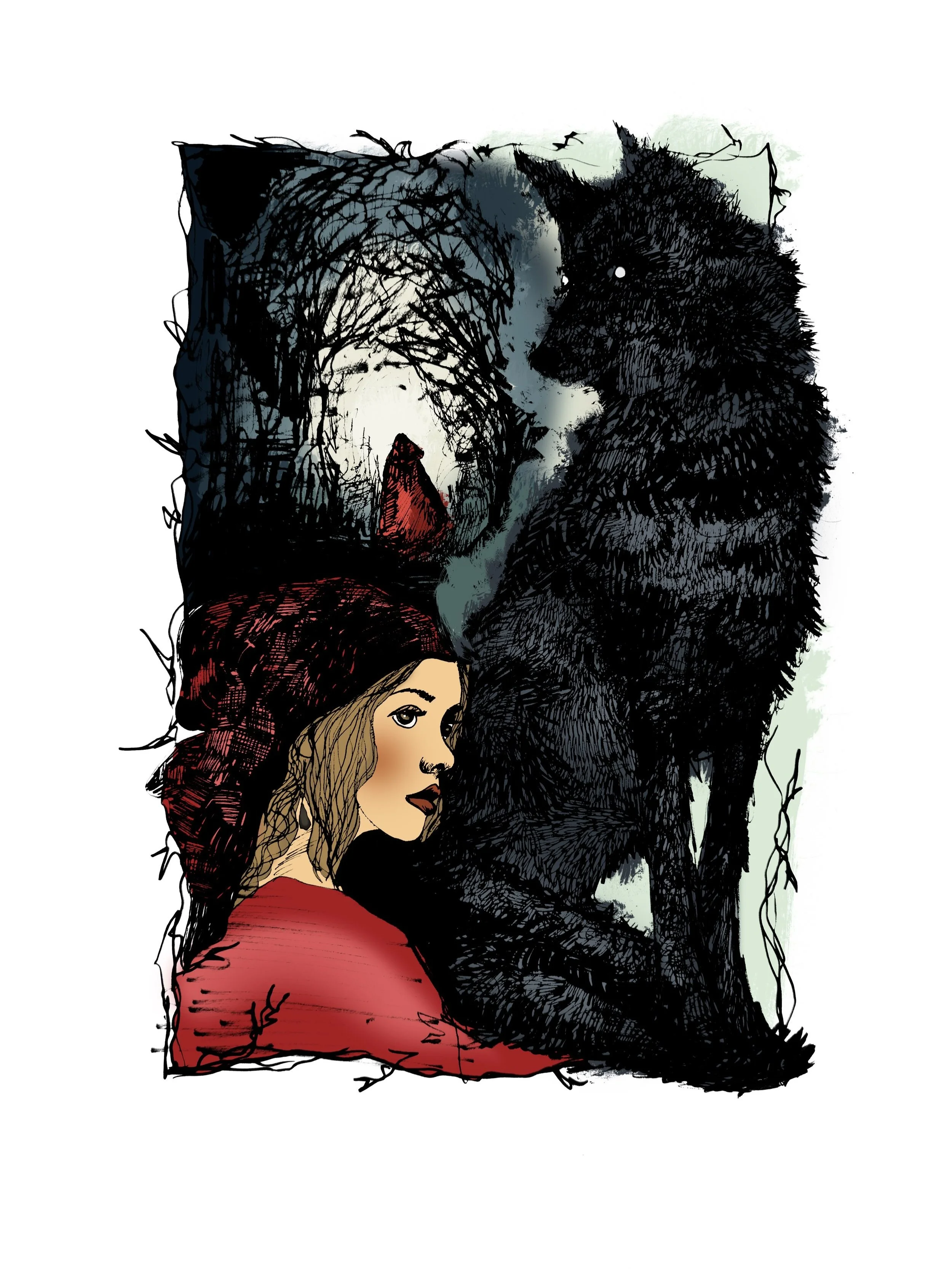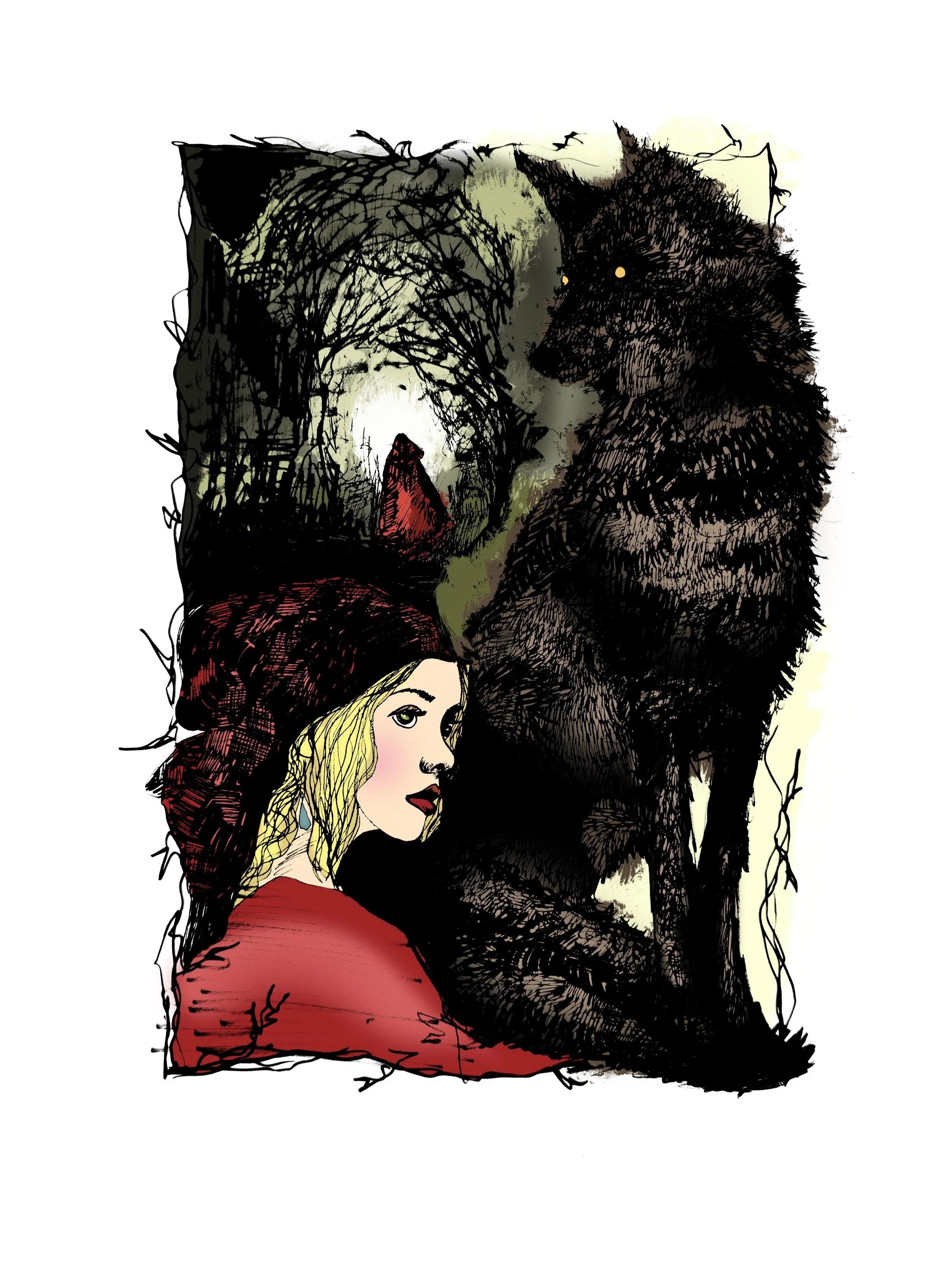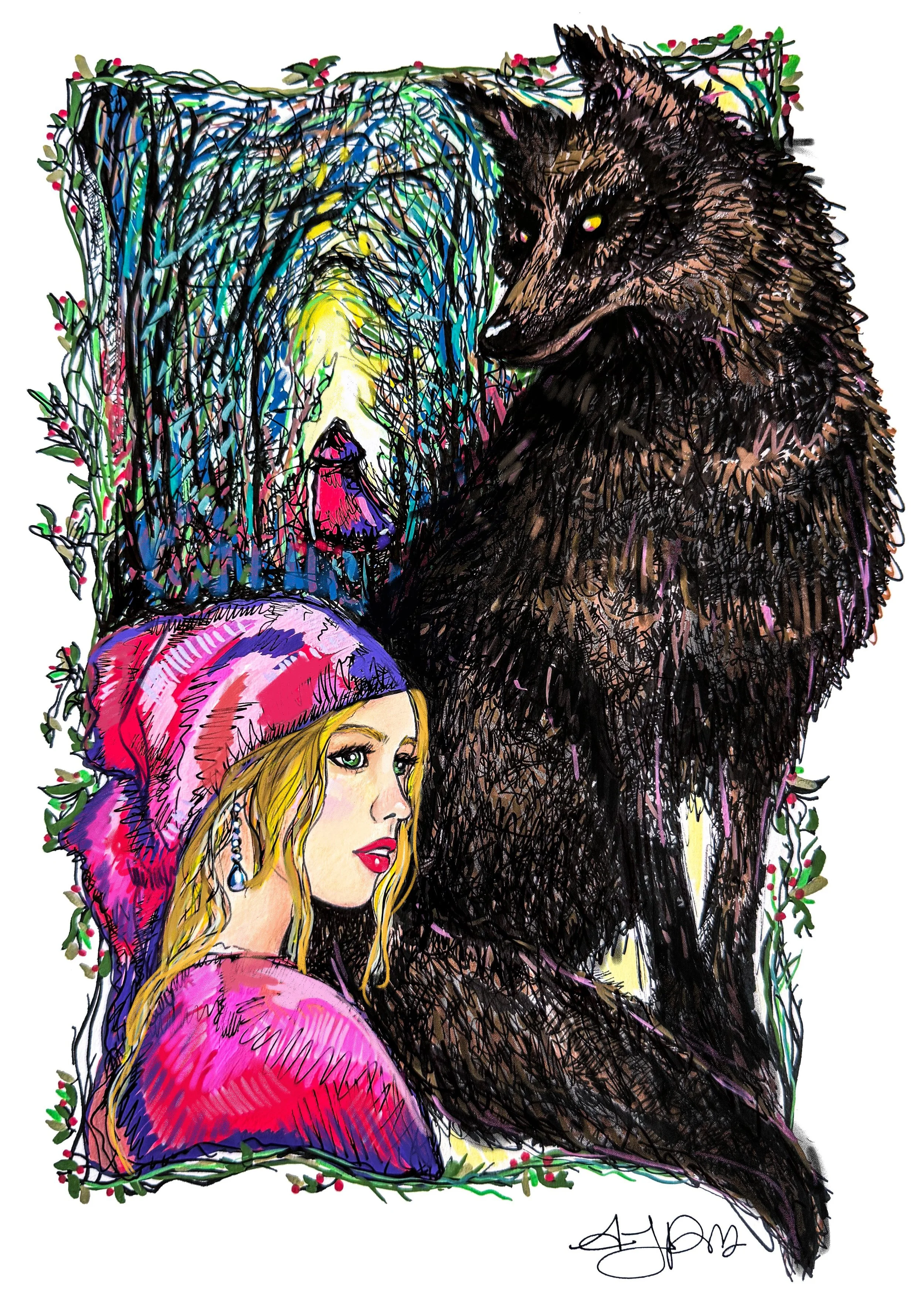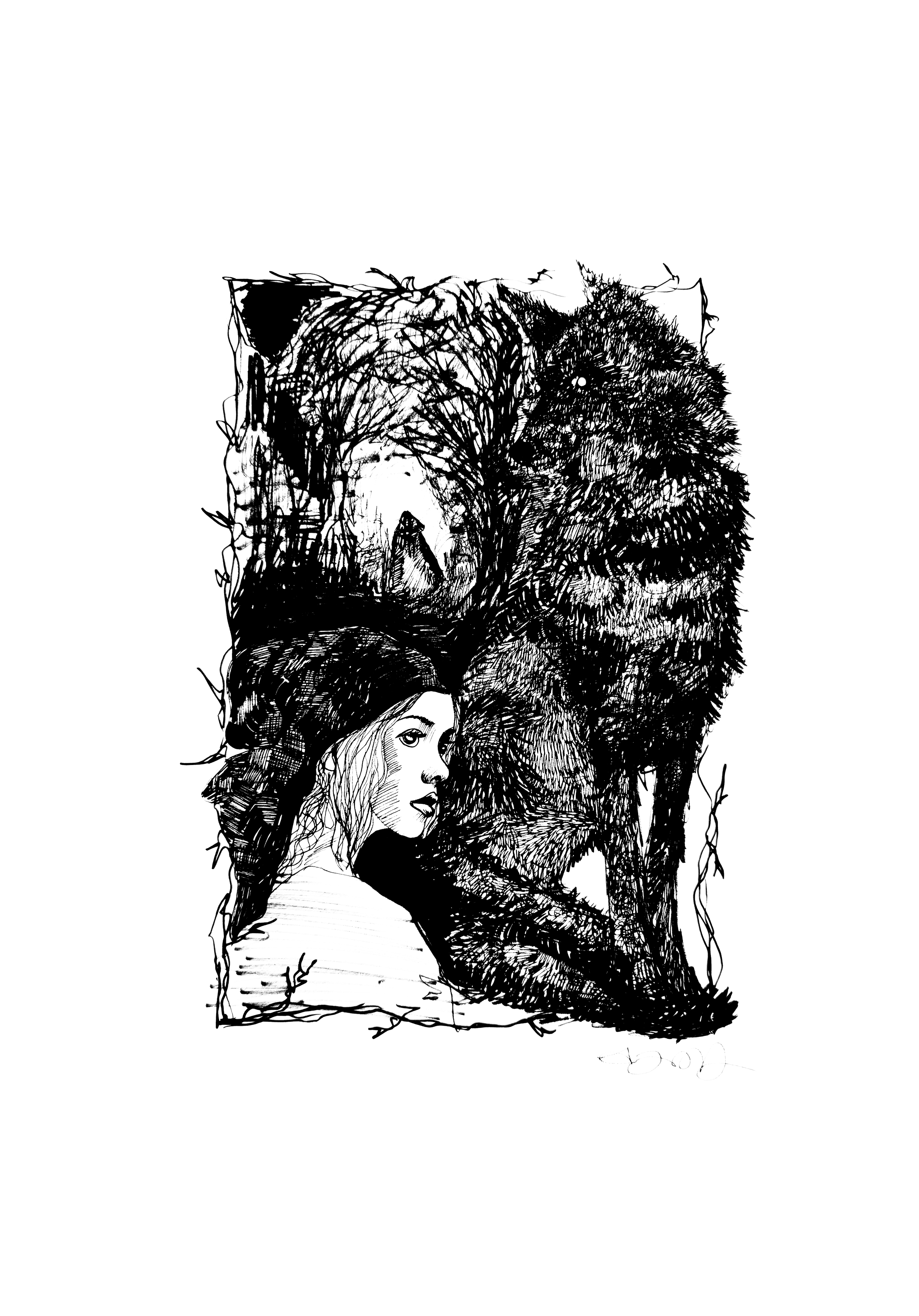
Illuminated Tales
A Visual Gateway into Fairytale Worlds
This project presents a narrative illustration inspired by one of Hans Christian Andersen’s approximately 156 fairytales. The work consists of a central illustration accompanied by a decorative frame influenced by the visual language of illuminated manuscripts. The objective is to capture the essence of this tradition by integrating ornamental elements with the narrative scene, thereby enhancing both visual and storytelling depth. The resulting piece serves as a conceptual gateway into the imaginative world of Andersen’s fairytales.
Exploration
This interpretation of Little Red Riding Hood employs layered woodland imagery to explore symbolic themes such as innocence versus deception, disobedience and consequence, the disguised predator, and the ambiguity of rescue or tragedy. The narrative leans into abstraction, with Red Riding Hood portrayed not as a fixed character but as a symbolic presence. Circular and oval forms—reminiscent of moons or mirrors—function as visual metaphors for reflection and moral complexity. The wolf emerges as both a natural predator and a cautionary figure, embodying the tension between instinct and choice. Symbolic botanical elements, including lotus (life) and lilies or spider lilies (death), underscore the dualities at play, enriching the story’s psychological and emotional landscape.















Red Reflections: A Visual Fable of Choice and Consequence
Continuing the dynamic exploration of Little Red Riding Hood, this approach emphasizes the moral complexity of choice and the instinctual roles found in nature—predator and prey. Rather than portraying the Wolf as simply evil, the narrative reframes him as a species acting according to its nature, deepening the symbolic relationship between Hood and Wolf. This lens invites a more abstract representation—one that blurs literal storytelling in favor of visual metaphors around power, vulnerability, and consequence. Within the frame, the interplay of choice, fate, and survival becomes central, reflecting the tale’s enduring lessons about trust, danger, and the duality of innocence and instinct.







-
Uses layered woodland imagery and organic forms to evoke depth and mystery.
Incorporates circular and oval shapes (moon, mirror) as metaphors for self-reflection and moral ambiguity.
Leans into abstraction rather than literal representation, allowing viewers to interpret meaning within a broader context—mirroring the ambiguity often found in modern life and media.
-
Red Riding Hood is reimagined not as a single character but a symbolic presence, representing universal experiences such as vulnerability, rebellion, and self-discovery.
This approach mirrors contemporary ideas around fluid identity, where roles, labels, and boundaries are no longer rigidly defined.
-
Explores the tension between instinct and choice, with the wolf acting as both predator and moral lesson.
Raises questions about trust, manipulation, and survival—key issues in today’s social, political, and interpersonal dynamics.
The ambiguous ending (rescue or tragedy?) speaks to the lack of moral clarity in modern narratives and decisions
-
Integrates symbolic flora—lotus (life), lilies/spider lilies (death)—to underscore the fragility and beauty of ethical choices.
Highlights nature’s role as both sanctuary and threat, paralleling today’s climate discourse and ecological concerns.
Encourages viewers to reflect on life/death, consequence, and transformation through a visual language rooted in folklore but applicable to today’s ethical landscape.

